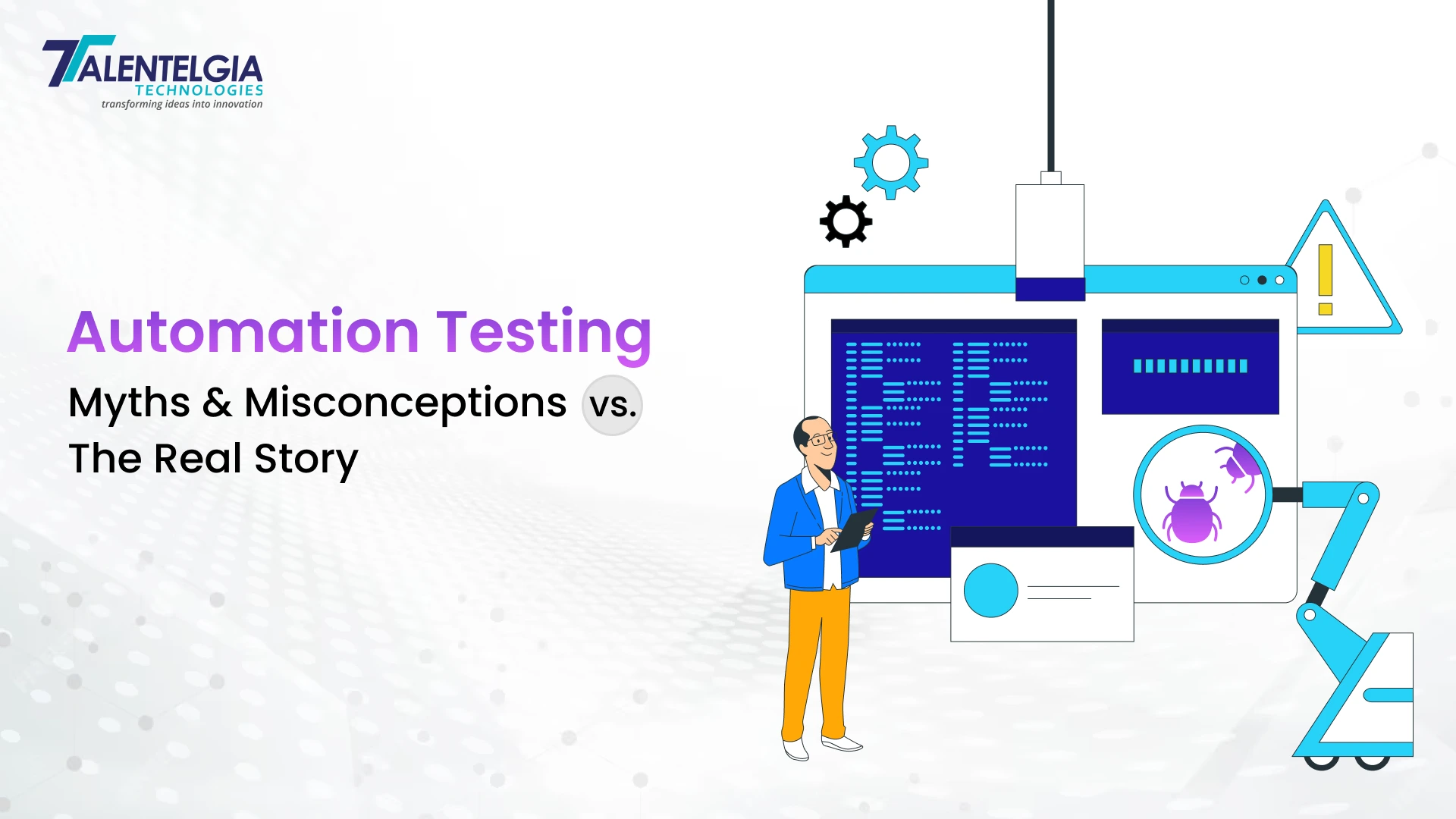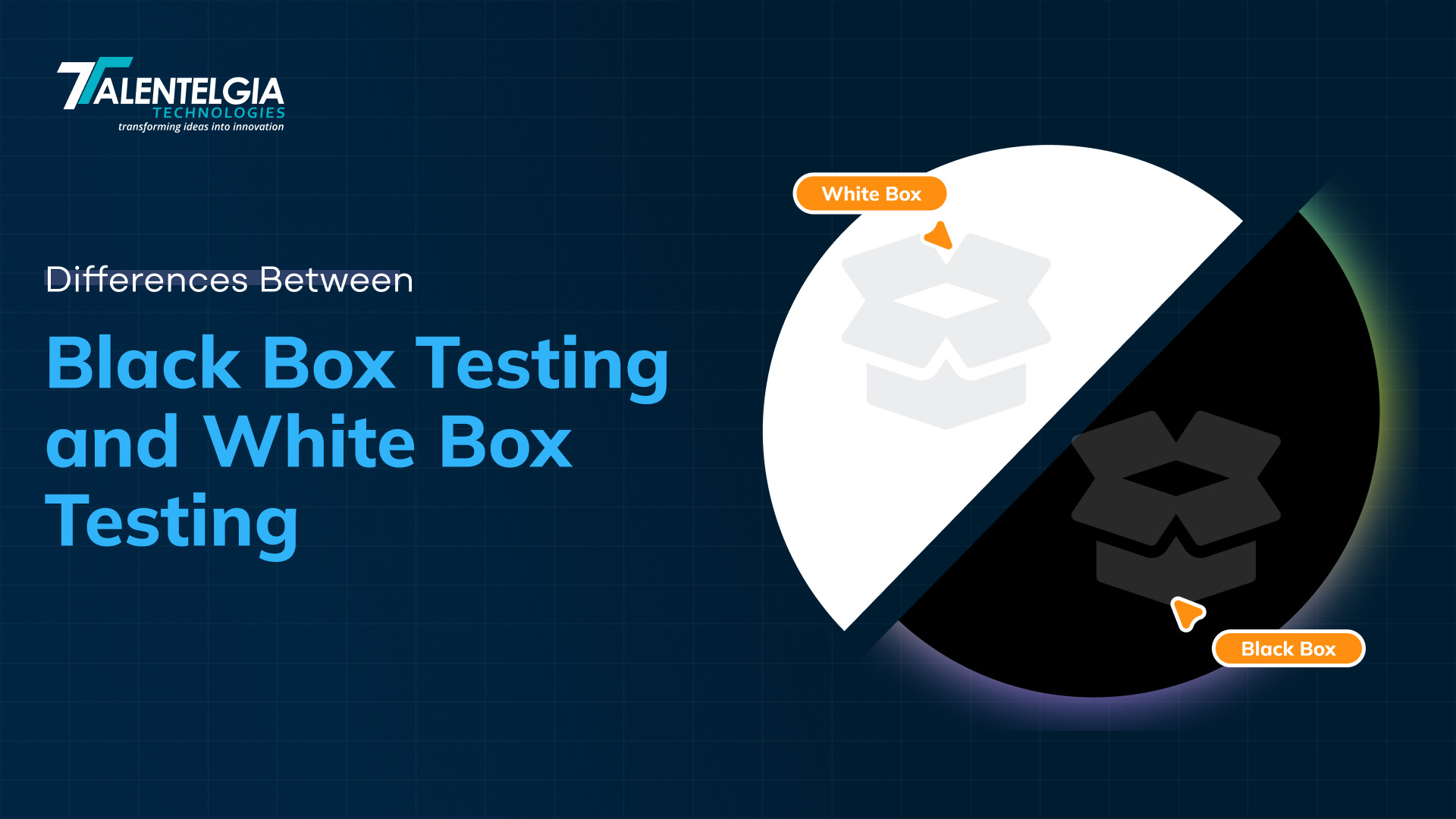Automation testing has grown rapidly in recent years. IT companies all across the globe are showing keen interest in the process. It is popular, but it is common for people to have many misconceptions about automation testing, which may lead to further confusion over how it works and what it can do. While some believe that automation can replace all sorts of manual testing, others think it is either a ‘one solution fits all’ approach or requires some extensive coding expertise.
This can prevent organizations from really embracing automation testing or having realistic expectations of what it can and cannot do. Automation testing is a potent tool that can yield incredible value when applied strategically. Thus, it is essential to know the advantages and limitations of the process. Let’s look closer to separate facts from myths and understand what automation testing is all about:
Myth: Automated Testing Replaces Manual Testing
Reality: Automation excels in repetitive tasks, regression testing, and large-scale scenarios, while manual testing is crucial for exploratory testing, usability, and assessing user experience.
Certain testing scenarios, especially those involving complex user behaviors are best suited for manual testing.
Myth: Automation is Swift and Effortless to Deploy
Reality: Setting up an automation framework requires careful planning, time, and expertise. Successful automation often needs specialized skills in programming, testing frameworks, and the specific application being tested. Finding or training the right personnel can take additional time.
Automated tests need regular updates to remain relevant as the application evolves. This maintenance can be complex, especially as features are added or modified.
Myth: Once Automated, Tests Are Self-Sustaining
Reality: If you’re adding new features or even changing the existing functionality, review and update the test scripts. This will ensure that they reflect the application’s current state. Changes in user requirements, design updates, or technological shifts can impact how tests should be structured. Regular maintenance ensures that tests align with the latest project goals.
If tests are not maintained, they may produce false results, leading to confusion and potentially allowing defects to slip through unnoticed or causing unnecessary rework.
Teams must allocate resources for maintaining automated tests, ensuring that they do not become outdated
Myth: Automation is Limited to Significant Projects
Reality: Automated testing can provide value to projects of all sizes. Implementing automation early on prepares smaller projects for future growth. As the project expands, having automated tests in place facilitates easier scaling and adaptation to new requirements.
Even small projects often have key features that require thorough testing. Automation helps ensure these functionalities are consistently validated.
Myth: Automation Secures High-Quality Software Outcomes
Reality: While automation increases testing efficiency, it doesn’t guarantee quality.
Automation improves the speed and coverage of testing, but it can only verify the functionalities that are explicitly defined in the test scripts. It does not assess overall user experience or usability.
Automated tests can miss unexpected bugs, especially if the tests are not designed to cover all possible scenarios. Manual testing is critical for exploratory testing and identifying edge cases.
Myth: Automation Testing Assures Software Without Bugs
Reality: Automated tests are based on predefined scripts that check specific functionality. If a bug falls outside of these scripts, it will likely go undetected.
Human testers can make use of their own expertise and experience to examine areas of the application that have not been covered by automated tests. They can try to anticipate the user interaction with the software.
Myth: Automation is Limited to Functional Testing
Reality: Automation can be applied to various testing types, including-
Performance Testing: Automation reveals the breaking points of an application, runs the load incrementally to break the system, and can be used to throw multiple users on the same application for stress testing of an application
API Testing: Automated tests can be used to ensure the functioning, dependability, and performance of APIs, ensuring they fulfill the required specifications.
User Interface Testing: Automation can also be applied to UI testing, though it might not always be an easy case. A major benefit that will come out of this is that it will verify the look and behavior of the application on different devices.
Integration Testing: Automation can be applied to the interactions between different modules or services, which guarantees that they work seamlessly as expected.
User Interface testing: While often challenging, automation can also be applied to UI testing to check the appearance and behavior of the application across different devices and browsers.
Integration Testing: Automation can facilitate testing the interactions between different modules or services, ensuring they work together as expected.
Myth: Automation Testing is Always Expensive
Reality: The initial automation set-up may involve heavy time and resource costs in terms of expenditure; however, the long-term benefits offset the upfront costs.
Automated tests can be run more often and faster than manual tests, which provides quicker feedback. This can save the cost of fixing the defects later in the development process. Also, automation scripts can be reused multiple times in different projects, and therefore their value becomes greater over time.
Conclusion
Even though automation testing is an incredibly powerful resource for any software development team. A proper understanding of its strengths and limitations would help in the effective wielding of this resource. It does not completely replace all other forms of testing, but instead supplements manual testing by eliminating all repetitive tasks, ensuring proper test coverage, and fostering faster feedback loops. Automation would add value to projects regardless of their scale and could be used to support various sorts of tests beyond simply functional ones.
Automation can drive efficiency in software development, reduce long-term costs, and enhance the reliability of software products. This requires proper planning, maintenance, and strategic implementation. However, effective automation is not a one-time task; it demands a continuous investment of time and expertise to adapt to changes in software and technology. Over time, automation can help organizations strike a balance between staying competitive and being responsive in today’s fast-paced software landscape.


 Healthcare App Development Services
Healthcare App Development Services
 Real Estate Web Development Services
Real Estate Web Development Services
 E-Commerce App Development Services
E-Commerce App Development Services E-Commerce Web Development Services
E-Commerce Web Development Services Blockchain E-commerce Development Company
Blockchain E-commerce Development Company
 Fintech App Development Services
Fintech App Development Services Fintech Web Development
Fintech Web Development Blockchain Fintech Development Company
Blockchain Fintech Development Company
 E-Learning App Development Services
E-Learning App Development Services
 Restaurant App Development Company
Restaurant App Development Company
 Mobile Game Development Company
Mobile Game Development Company
 Travel App Development Company
Travel App Development Company
 Automotive Web Design
Automotive Web Design
 AI Traffic Management System
AI Traffic Management System
 AI Inventory Management Software
AI Inventory Management Software
 AI Software Development
AI Software Development  AI Development Company
AI Development Company  AI App Development Services
AI App Development Services  ChatGPT integration services
ChatGPT integration services  AI Integration Services
AI Integration Services  Generative AI Development Services
Generative AI Development Services  Natural Language Processing Company
Natural Language Processing Company Machine Learning Development
Machine Learning Development  Machine learning consulting services
Machine learning consulting services  Blockchain Development
Blockchain Development  Blockchain Software Development
Blockchain Software Development  Smart Contract Development Company
Smart Contract Development Company  NFT Marketplace Development Services
NFT Marketplace Development Services  Asset Tokenization Company
Asset Tokenization Company DeFi Wallet Development Company
DeFi Wallet Development Company Mobile App Development
Mobile App Development  IOS App Development
IOS App Development  Android App Development
Android App Development  Cross-Platform App Development
Cross-Platform App Development  Augmented Reality (AR) App Development
Augmented Reality (AR) App Development  Virtual Reality (VR) App Development
Virtual Reality (VR) App Development  Web App Development
Web App Development  SaaS App Development
SaaS App Development Flutter
Flutter  React Native
React Native  Swift (IOS)
Swift (IOS)  Kotlin (Android)
Kotlin (Android)  Mean Stack Development
Mean Stack Development  AngularJS Development
AngularJS Development  MongoDB Development
MongoDB Development  Nodejs Development
Nodejs Development  Database Development
Database Development Ruby on Rails Development
Ruby on Rails Development Expressjs Development
Expressjs Development  Full Stack Development
Full Stack Development  Web Development Services
Web Development Services  Laravel Development
Laravel Development  LAMP Development
LAMP Development  Custom PHP Development
Custom PHP Development  .Net Development
.Net Development  User Experience Design Services
User Experience Design Services  User Interface Design Services
User Interface Design Services  Automated Testing
Automated Testing  Manual Testing
Manual Testing  Digital Marketing Services
Digital Marketing Services 
 Ride-Sharing And Taxi Services
Ride-Sharing And Taxi Services Food Delivery Services
Food Delivery Services Grocery Delivery Services
Grocery Delivery Services Transportation And Logistics
Transportation And Logistics Car Wash App
Car Wash App Home Services App
Home Services App ERP Development Services
ERP Development Services CMS Development Services
CMS Development Services LMS Development
LMS Development CRM Development
CRM Development DevOps Development Services
DevOps Development Services AI Business Solutions
AI Business Solutions AI Cloud Solutions
AI Cloud Solutions AI Chatbot Development
AI Chatbot Development API Development
API Development Blockchain Product Development
Blockchain Product Development Cryptocurrency Wallet Development
Cryptocurrency Wallet Development About Talentelgia
About Talentelgia  Our Team
Our Team  Our Culture
Our Culture 
 Healthcare App Development Services
Healthcare App Development Services Real Estate Web Development Services
Real Estate Web Development Services E-Commerce App Development Services
E-Commerce App Development Services E-Commerce Web Development Services
E-Commerce Web Development Services Blockchain E-commerce
Development Company
Blockchain E-commerce
Development Company Fintech App Development Services
Fintech App Development Services Finance Web Development
Finance Web Development Blockchain Fintech
Development Company
Blockchain Fintech
Development Company E-Learning App Development Services
E-Learning App Development Services Restaurant App Development Company
Restaurant App Development Company Mobile Game Development Company
Mobile Game Development Company Travel App Development Company
Travel App Development Company Automotive Web Design
Automotive Web Design AI Traffic Management System
AI Traffic Management System AI Inventory Management Software
AI Inventory Management Software AI Software Development
AI Software Development AI Development Company
AI Development Company ChatGPT integration services
ChatGPT integration services AI Integration Services
AI Integration Services Machine Learning Development
Machine Learning Development Machine learning consulting services
Machine learning consulting services Blockchain Development
Blockchain Development Blockchain Software Development
Blockchain Software Development Smart contract development company
Smart contract development company NFT marketplace development services
NFT marketplace development services IOS App Development
IOS App Development Android App Development
Android App Development Cross-Platform App Development
Cross-Platform App Development Augmented Reality (AR) App
Development
Augmented Reality (AR) App
Development Virtual Reality (VR) App Development
Virtual Reality (VR) App Development Web App Development
Web App Development Flutter
Flutter React
Native
React
Native Swift
(IOS)
Swift
(IOS) Kotlin (Android)
Kotlin (Android) MEAN Stack Development
MEAN Stack Development AngularJS Development
AngularJS Development MongoDB Development
MongoDB Development Nodejs Development
Nodejs Development Database development services
Database development services Ruby on Rails Development services
Ruby on Rails Development services Expressjs Development
Expressjs Development Full Stack Development
Full Stack Development Web Development Services
Web Development Services Laravel Development
Laravel Development LAMP
Development
LAMP
Development Custom PHP Development
Custom PHP Development User Experience Design Services
User Experience Design Services User Interface Design Services
User Interface Design Services Automated Testing
Automated Testing Manual
Testing
Manual
Testing About Talentelgia
About Talentelgia Our Team
Our Team Our Culture
Our Culture

















 Write us on:
Write us on:  Business queries:
Business queries:  HR:
HR: 




